- Books Name
- AMARENDRA PATTANAYAK Mathmatics Book
- Publication
- KRISHNA PUBLICATIONS
- Course
- CBSE Class 11
- Subject
- Mathmatics
Trigonometric Functions, Sign, Domain, Range and their graphs
sin2x + cos2 x = 1
From the given identity, the following things can be interpreted:
cos2x = 1- sin2 x
cos x = √(1- sin2x)
Now we know that cosine function is defined for real values therefore the value inside the root is always non-negative. Therefore,
1- sin2x ≥ 0
sin2x ≤ 1
sin x ∈ [-1, 1]
Hence, we got the range and domain for sine function.
Similarly, following the same methodology,
1- cos2x ≥ 0
cos2x ≤1
cos x ∈ [-1,1]
Hence, for the trigonometric functions f(x)= sin x and f(x)= cos x, the domain will consist of the entire set of real numbers, as they are defined for all the real numbers. The range of f(x) = sin x and f(x)= cos x will lie from -1 to 1, including both -1 and +1, i.e.
- -1 ≤ sin x ≤1
- -1 ≤ cos x ≤1
Now, let us discuss the function f(x)= tan x. We know, tan x = sin x / cos x. It means that tan x will be defined for all values except the values that will make cos x = 0, because a fraction with denominator 0 is not defined. Now, we know that cos x is zero for the angles π/2, 3 π/2, 5 π/2 etc. therefore,

Hence, for these values, tan x is not defined.
So, the domain of f(x) = tan x will be R –
and the range will be set of all real numbers, R.


IMPORTANT NOTE
- The sum of interior angles of a polygon of n-sides = (n – 2) × 180º = (n – 2) π
- Each interior angle of a REGULAR polygon of n-sides =
- The sum of exterior angles of a polygon of any number of sides = 360º = 2π
BASIC FORMULAE OF TRIGONOMETRIC FUNCTIONS

SIGN OF TRIGONOMETRIC FUNCTIONS
Two perpendicular lines intersecting at a point O divide a plane in 4 right angles, each is called a quadrant. If θ be the angle that a line OA subtends with the initial line OX, anticlockwise then.
In I Quadrant, 0° < θ < 90°
In II Quadrant, 90° < θ < 180°
In III Quadrant, 180° < θ < 270°
In IV Quadrant, 270° < θ < 360°
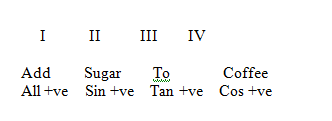
The following table illustrates the sign of various trigonometric functions in all the four quadrants
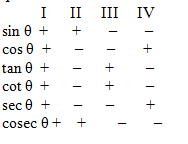
PERIODIC FUNCTIONS
A function f is said to be periodic if there exists a real number
T > 0 such that f (x + T) = f (x) for all x. T is called the period of the function.
All trigonometric functions are periodic functions with following periods.
For sin θ, cos θ, sec θ, and cosec θ, the period = 2π. For
tan θ and cot θ the period = π
THEOREM : If f(x) is a periodic function with period T, then f (ax + b) is a periodic function with period
For example :
Period of sin θ is 2π
Period of sin 2θ is
Period of
Period of ....... etc.
PERIOD OF SOME IMPORTANT TRIGONOMETRIC FUNCTIONS
- Periods of sinnθ, cosnθ, secnθ, and cosecn θ = 2π if n is odd and π if n is even
- Periods of tannθ,cotnθ, = π, n even or odd.
- Periods of |sinθ|, |cosθ|, |tanθ|, |cot θ|, |secθ|, |cosec θ|= π
- Periods of |sin θ| + |cos θ|, |tan θ| + |cot θ|, |sec θ| + |cosec θ| are
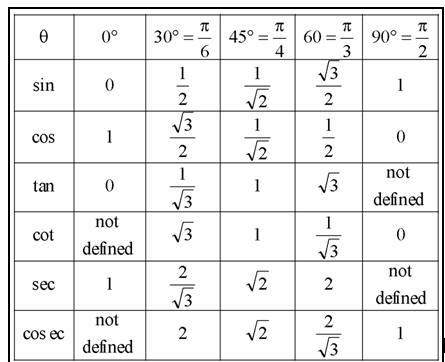
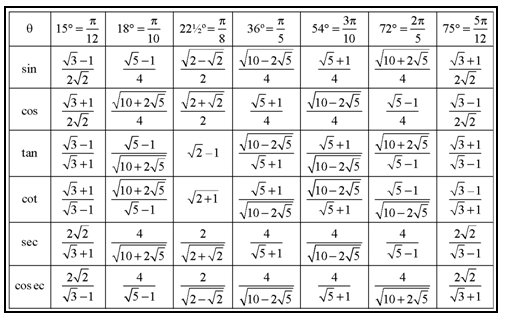
Domain and Range for Sec, Cosec and Cot Functions
We know that sec x, cosec x and cot x are the reciprocal of cos x, sin x and tan x respectively. Thus,
sec x = 1/cos x
cosec x = 1/sin x
cot x = 1/tan x
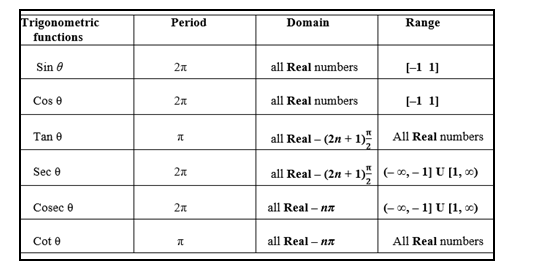
Hence, these ratios will not be defined for the following:
- sec x will not be defined at the points where cos x is 0. Hence, the domain of sec x will be R-{(2n+1)π/2}, where n∈ Integer. The range of sec x will be R- (-1,1). Since, cos x lies between -1 to1, so sec x can never lie between that region.
- cosec x will not be defined at the points where sin x is 0. Hence, the domain of cosec x will be R-{nπ}, where n∈ Integer. The range of cosec x will be R- (-1,1). Since, sin x lies between -1 to1, so cosec x can never lie in the region of -1 and 1.
- cot x will not be defined at the points where tan x is 0. Hence, the domain of cot x will be R-{nπ}, where n∈ Integer. The range of cot x will be the set of all real numbers, R.


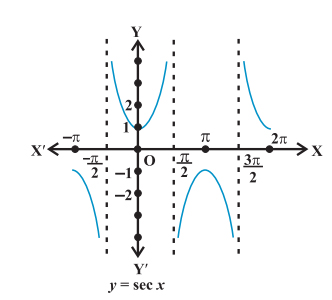
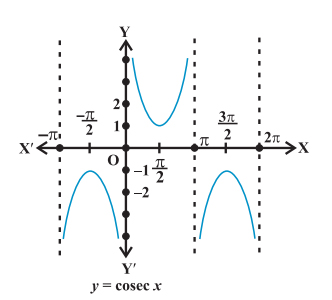
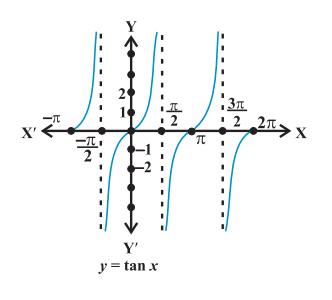
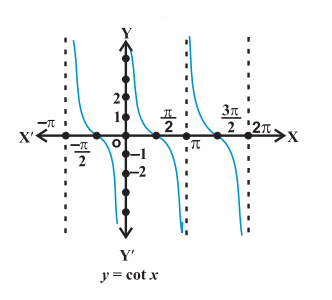
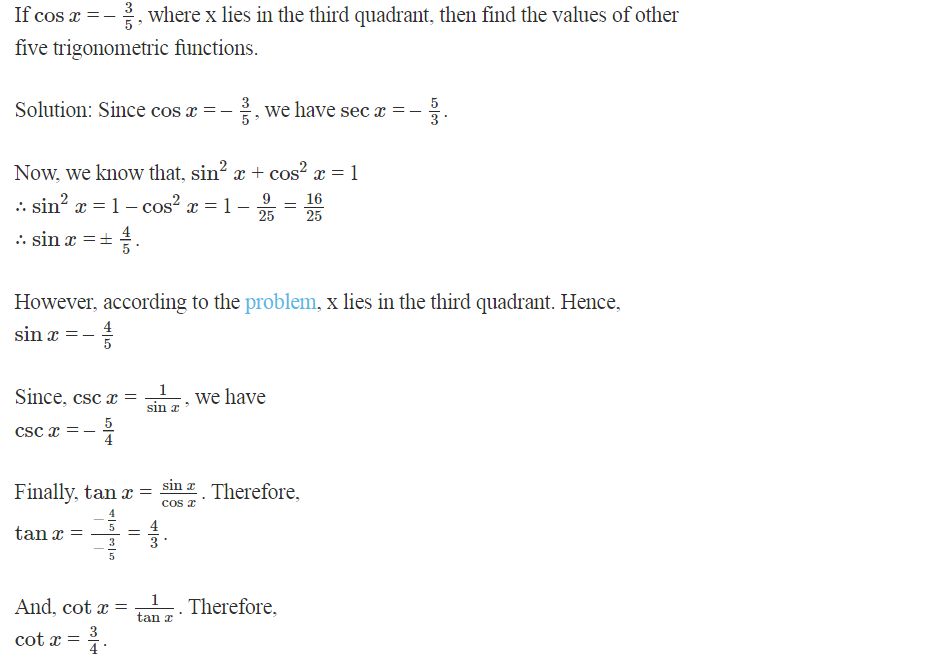

 KRISHNA PUBLICATIONS
KRISHNA PUBLICATIONS
